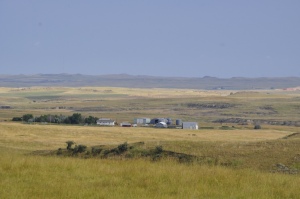Bloomberg News: Baker, Montana Rancher managing cattle in the cold
 As temperatures dipped to a record minus 25 degrees Fahrenheit (minus 32 Celsius), the crew at Dean Wang’s ranch in Baker,Montana, increased alfalfa-hay rations to give his cattle more energy during the arctic blast.
As temperatures dipped to a record minus 25 degrees Fahrenheit (minus 32 Celsius), the crew at Dean Wang’s ranch in Baker,Montana, increased alfalfa-hay rations to give his cattle more energy during the arctic blast.
“Cattle are requiring more feed in order to just maintain their body temperature, instead of putting that extra energy into gaining weight,” said Wang, 46, who has about 850 cows that will calve this spring and 550 young cattle. “This year, everyone started feeding a little earlier than what they would have liked, because of the heavy snow and the cold.”
The deep freeze that swept across the U.S. last week, disrupting travel and boosting fuel use, is compounding stress on a shrinking domestic beef industry already struggling with high costs and weather shocks. While crops from oranges to winter wheat avoided major damage, the cold slowed the growth of livestock and extended a rally in Chicago cattle futures to a record, signaling higher beef costs for restaurants including McDonald’s Corp. (MCD) and Texas Roadhouse Inc.
 The U.S. cattle herd contracted for six straight years to the smallest since 1952, government data show. A record drought in 2011 destroyed pastures in Texas, the top producing state, followed the next year by a surge in feed-grain prices during the worst Midwest dry spell since the 1930s. Fewer cattle will mean production in the $85 billion beef industry drops to a 20-year low in 2014, the U.S. Department of Agriculture said.
The U.S. cattle herd contracted for six straight years to the smallest since 1952, government data show. A record drought in 2011 destroyed pastures in Texas, the top producing state, followed the next year by a surge in feed-grain prices during the worst Midwest dry spell since the 1930s. Fewer cattle will mean production in the $85 billion beef industry drops to a 20-year low in 2014, the U.S. Department of Agriculture said.
Read the entire article from Elizabeth Campbell on Bloomberg News – Shivering Cattle Signal Higher McDonald’s Beef Cost: Commodities.


